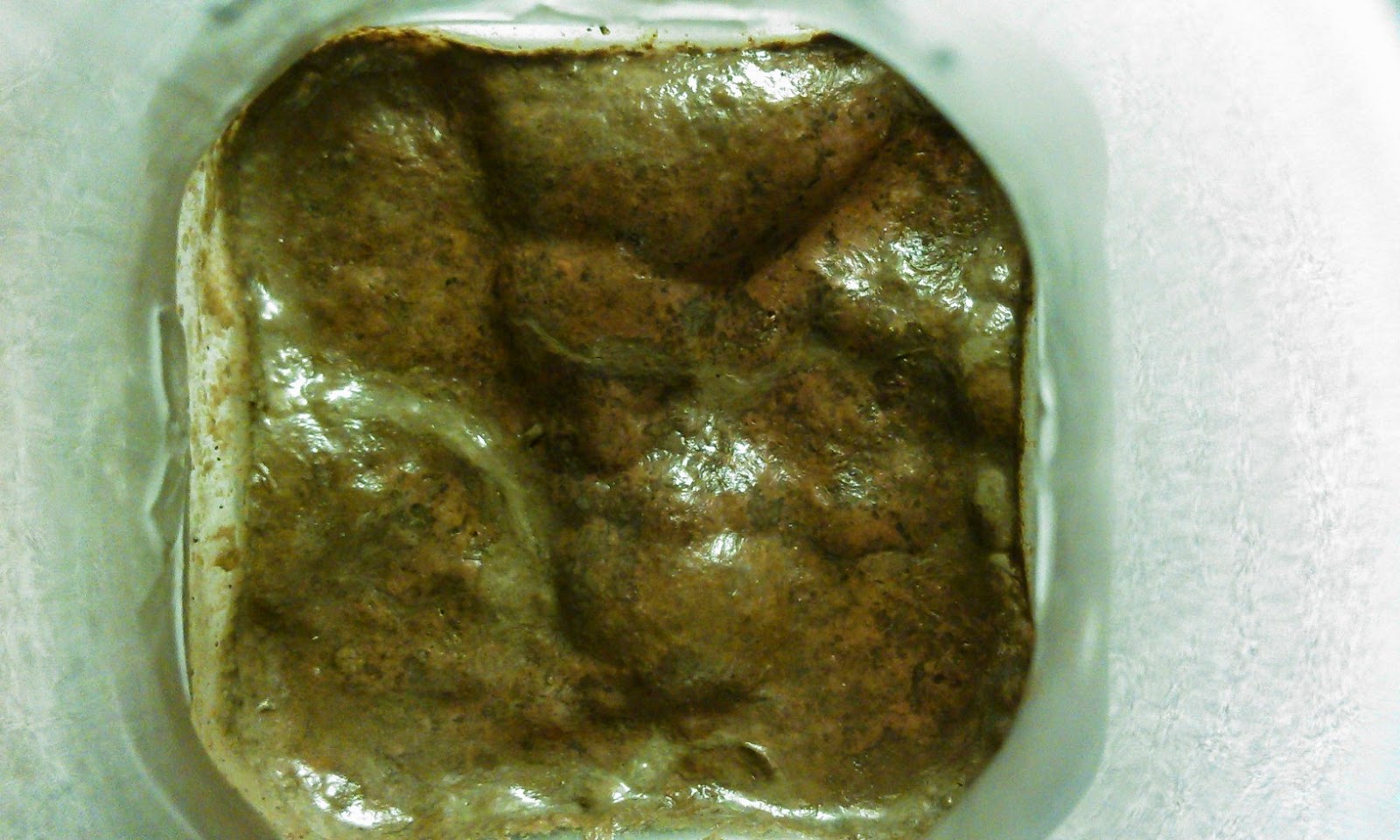***NOTE***
I had to transport my columns to my boyfriend's house STRAIGHT after my last finals due to complications in his schedule. While I planned to take it apart yesterday, time didn't permit it. This is important because my columns shifted during the car ride to Cincinnati. My biofilm layer in Column #2 completely disappeared, as a result, so there was no biofilm layer I could observe when I broke down my columns.
Materials for Breakdown:
- Cellophane
- Plastic Spoons
Column #1
When I removed the cellophane on top of Column #1, it smelled earthy and compost-like, but it smelled like that in a "bad way."
Also, I was surprised to find that there was mold growing on top of the biofilm!
Here we can see specks of orange underneath and around the mold and biofilm.
Here are mud samples taken from the top of the column, the middle of the column, and the bottom of the column. There wasn't much visible distinction between the bottom and middle layer, but I did note that the mud there was slightly darker than the mud in the top layer.
When I finished sampling the mud out of the column with a plastic spoon, I noticed that the column was producing a lot of has bubbles on top of the mud that was left in the column. This must be because Column had no gas exchange with oxygen occurring, and once it was finally exposed to oxygen (I did this outside), gas exchange abruptly started to occur. Here's a video of it:
Column #2
Because the biofilm in Column #2 was disrupted during the car ride to Cincinnati, Column #2 was a lot less exciting to observe.
Gas exchange occurred all the time because the cap was left off of Column #2. No mold grew here, so it is possible that higher levels of oxygen inhibit mold growth.
The mud in Column #2 was pretty uniform throughout: one shade of green-brown.
I really wished the biofilm was still there. It would have been neat to spoon out and look at more closely. In case you forgot how cool and gnarly it looked, here's a refresher:
...I REALLY wish I could have looked at this when I took the column apart! -sulks-
Overall, it was a fun ride, little Winogradsky column o' mine. I learned a lot about lake and pond habitats and about why the types of bacteria grow in the places they do. I really wish it could have gone longer under more preferable conditions, like: NOT in winter (more sunlight), for a longer period (to permit more growth and separation of bacterial zones), and less uncontrolled but inevitable disturbance (Winogradsky columns DO NOT like car rides).
Warmest Regards,
Michelle Rabara























































